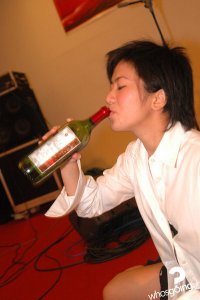Those who have invested in water saving technologies are breathing a little easier than those who have not as California water supplies get even more scarce.
Victor Hugo Roberts, owner of Victor Hugo Vineyards and Winery in Templeton, Calif., is one of those who invested in high tech soil moisture monitors to manage his irrigation. This is his third year using the technology.
“We are probably reducing our water usage 50 percent to 60 percent of what we used to put out before we went to the monitoring system,” Roberts says. “We may start sooner and irrigate more often, but we’re not using as much water. Instead of one long irrigation cycle during the week in the warmest part of the season, we might go with two lighter irrigation cycles and still use less water.”
Applying more water than the soil will hold in the root zone only moves water out of the area where the vines can utilize it and reduce water efficiency.
Victor Hugo Vineyards and Winery specializes in a wide selection of hand-crafted lots of wine. The vineyards consist of 78 acres planted to Chardonnay, Zinfandel, Syrah, Petite Sirah, Viognier and five Bordeaux reds — Cabernet Sauvignon, Cabernet Franc, Merlot, Malbec, and Petit Verdot.
Drought management strategies are implemented from the time the vineyards are planted. Vines are grafted on four different phyllexora and nematode resistant rootstocks also specifically selected for drought tolerance. This enables Roberts to use mild deficit irrigation to concentrate flavors and further improve wine quality. The use of soil moisture monitoring allows him to tweak the irrigation input even more. Roberts contracts the soil moisture monitoring service through Precision Ag, Inc. in Paso Robles, Calif.
“This technology is much more sophisticated than the neutron probe,” Roberts says. “We have constant access to soil moisture conditions which allows us to deliver water only when we need it. The ability to record temperature data along with soil moisture is just another bonus.”
The neutron probe is almost antiquated technology, according to Lowell Zelinski, independent PCA and owner of Precision Ag Inc. “Soil-based monitoring systems that use capacitance sensors provide much better data than the neutron probe,” he says.
Zelinski believes that capacitance-based soil moisture monitoring is one of the best and most cost-effective ways to schedule irrigation in vines, trees and many other permanent and semi-permanent crops.
“Many methods of soil moisture monitoring are effective for telling you how much to water but don’t tell you when,” Zelinski says. “To optimize plant health and the plant’s use of water and nutrients, knowing when to water is just as critical as knowing how much. With the capacitance sensors you receive accurate, reliable, visual data that can answer both questions.”
The system can track temperatures, rainfall, leaf moisture, soil water, and a number of other factors and is so precise that water can be applied within a few minutes of when the system alerts the need for moisture.
“It gives you much more than just a snapshot of the situation,” Roberts says. “Our soils have a very high shale content, so they don’t hold moisture very long. It’s critical that we irrigate when the vines need the moisture, but at the same time, we don’t want to waste water.”
There are six wells on the property, but five are relatively shallow wells which makes water conservation even more important for Roberts. “Soil moisture monitoring gives us the capability of 24/7 analysis,” he says. “We put just enough water on without going beyond the permanent wilting point so we never put our vines into severe stress.”
Soil moisture monitoring systems vary in features. However, it is now reasonable to expect systems to come with sensors that measure multiple factors such as air temperature, relatively humidity, rainfall and irrigation events, and leaf wetness. Zelinski uses Decagon ECH20 soil moisture monitoring equipment.
“I’ve been amazed at what I’ve seen this season,” Zelinski says. “You can walk out in a vineyard and look at the vines, but you can never tell exactly what’s happening with soil moisture at any given point unless you have this capability.”
Although the name Victor Hugo is famous in 1800’s literature, Victor was supposedly named after a great uncle and a great grandfather (the man who anglicized the family name from the French name Robert to Roberts). There is no attribution to any literary connection, although the name certainly invokes a “bootstraps” type of ideology. Roberts has definitely pulled himself up into the respected echelon of the Paso Robles wine industry with that work ethic.
Roberts graduated from U.C. Davis in 1979 with a degree in enology. After three years of winery experience, he saw an advertisement in a wine industry publication for a winemaker at a new winery in the Paso Robles area. He took the position where he remained for 15 years as winemaker and general manager until leaving in 1997 to establish Victor Hugo Vineyards and Winery. Roberts was on the founding board for the Paso Robles Vintners and Growers Association and served three years as its first president. He was chairman of the Paso Robles Wine Festival for eight years.
In 1985, he and his wife Leslie, planted 15 acres on the Templeton property which today encompasses the family home, vineyards and a “laid back” tasting room.
Brenda Carol
skip to main |
skip to sidebar




Enhance the pleasure that you get from wine by sharing your experiences, knowledge, news articles and facts about the elixir of the gods and bacchanalia on earth by emailing: bacchusforyou@bellsouth.net

ORIGINAL BACCHANALIAN CREATION

BACCHANALIAN WINE GLASS

I LOVE WINE, BUT I NEED TO LEARN HOW TO DRINK IT

Related Links
Blog Archive
-
▼
2008
(305)
-
▼
September
(14)
-
▼
Sep 01
(8)
- Vineyard properties remain a hot buy
- Massive Bordeaux 2000 collection at Christie's
- Rosé consumption in the pink
- California grape growers wary of proposal on Chile...
- Soil moisture monitoring saves water, improves win...
- Grgich celebrates 50 years of making wine - and hi...
- French wine sales plummet in credit crunch
- How To Create Your Very Own Magnificent Red Wine E...
-
▼
Sep 01
(8)
-
▼
September
(14)
How Much Did The Best Bottle of Wine You Ever Drank Cost?
CONTACT INFORMATION
TO SUBMIT A POST, TO BE PUT ON THE MAILING LIST, TO HAVE QUESTIONS ANSWERED, ETC.
EMAIL: